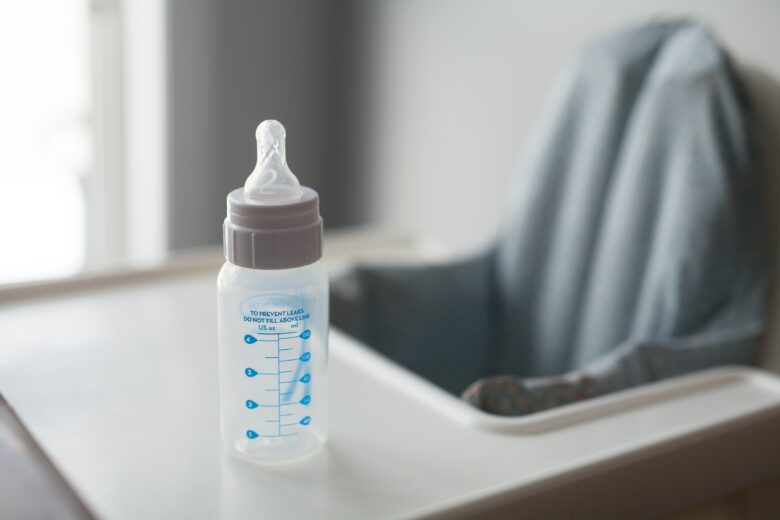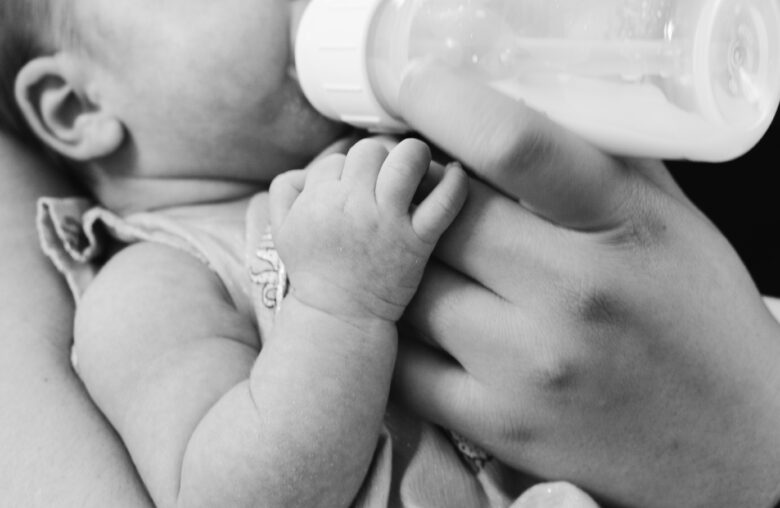We understand that if you’re a new mom, and you’ve decided to go down the formula route as opposed to breastfeeding, it can all be a little overwhelming.
After all, there’s so much information out there, and you’re likely to be feeling sensitive, vulnerable and a little lost right now. In this helpful guide, we aim to make it all a little bit clearer for you. Here’s everything you need to know about feeding your baby formula…
What is baby formula?
Baby formula – also referred to as infant formula, formula and first milk or infant milk, is a type of food designed for babies under the age of one. It’s typically fed in a bottle or a cup and comes in powder or liquid form. Usually, it’s made from cows’ milk that’s been treated so it’s suitable for infants.
Hold the phone. Why not breastfeed in the first place?

You’ll have no doubt heard the expression “Breast is best!” And it’s true that it’s a concept backed up by health bigwigs like the World Health Organization and UNICEF. The thing is, breast milk is stuffed with bacteria-fighting nutrients, which can reduce your little one’s chances of getting nasty allergies, asthma, stomach issues and respiratory problems.
All that said, it’s not for everyone. Many moms cannot breastfeed for certain reasons, such as their little one can’t latch on properly and therefore isn’t getting enough milk. Formula is an alternative route and, if it’s the right path for you and your baby, then that’s absolutely fine. Be sure to ignore pressures from well-meaning but ill-advised friends and family members!
There are different types of baby formulas
There are lots of different types for your baby. We’ve listed them below:
1. First milk formula
This type of formula is suitable from birth, and can be made with either cows’ or goats’ milk. First milk contains two proteins – whey and casein, which will help with baby’s growth.
2. Hungry or hungrier formula
This is something you’d give your baby if your doctor or midwife says it’s ok. It’s designed for ‘hungrier’ babies and contains more casein.
3. Anti-reflux formula

Again, only to be recommended by a healthcare professional, anti-reflux formula is thicker, and designed to reduce reflux (milk coming back up) after drinking.
4. Lactose-free formula
This one does what it says on the tin – it’s strictly for lactose-intolerant tots. Signs of which include tummy upset, pain, wind and bloating. Make sure your baby is actually diagnosed by an expert before you stock up on this.
5. Hypoallergenic formula
Hypoallergenic formula is designed for babies with allergies, and contains proteins that are broken down for this very reason. For more information visit this website.
6. Follow-on formula
This is designed for babies aged six months and over. Health workers agree that so far, no studies have proved that switching to this at six months has any benefits. You can continue on infant formula if you wish.
How to prepare baby formula

Preparing formula properly is really important, in order to prevent tummy upsets and infections. After all, your baby’s immune system is nowhere near as powerful as yours, and won’t be for quite some time. Here are the steps for formula preparation…
- Fill the kettle with fresh water from the tap (do not boil old water
- Boil the kettle and leave for no longer than half an hour
- Wash your hands and wipe clean the surface you’re working on
- If you’re using a cold-water sterilizer, then rinse it with cooled, boiled kettle water
- Pour the correct amount of water into the bottle according to the package instructions
- Add your formula into the scoop, level with a knife, and then add into the water
- Screw the lid on and shake the bottle until the formula is dissolved
- Hold the bottle under cold tap water to cool down slightly
- Finally, test the temperature by squeezing a little out onto the inside of your wrist. It should feel warm or cool, but never hot
A word of warning – always read the instructions on your packaging, too. Every manufacturer is different.
How you should store baby formula
Experts agree that, where possible, formula should be made fresh whenever an infant needs it. This is because bacteria can start to form when it’s stored. There are some important timelines to be aware of when it comes to formula storage. If it’s in the fridge, formula can be stored for 24 hours. If it’s in a cool bag with ice, it should be stored for just four hours, and if it’s at room temperature, you’ll need to use it within two hours.
How to serve baby formula

It might come as something of a surprise, but there are actually no proven health benefits to warmed-up milk. It’s true! Instead, you could consider serving your baby’s formula cold or at room temperature right from the start. This will get your baby accustomed to it, and save you loads of time.
If you do decide to serve your baby’s formula warm, don’t heat it up in the microwave. We’d recommend using specialist bottle warmers instead.
Feeding your baby formula is a bonding experience
New moms are often overwhelmed by the whole breast-is-best argument, as we mentioned above, and will no doubt hear lots of experts waxing lyrical about the magical bonding experience of breastfeeding. The truth is, formula feeding your baby is just as much of a bonding experience. The skin to skin contact, the soothing, the locking of eyes – all of these things are just as present as they would be during breastfeeding, so never feel like this is an issue if you go down the formula route.
There’s likely to be some in-diaper changes!
If you compare your baby’s formula-induced poop to that of a breastfed baby’s, don’t be alarmed if you notice differences – it’s completely normal. Usually, babies that are formula-fed will normally produce a substance that’s darker and smellier (sorry moms).

